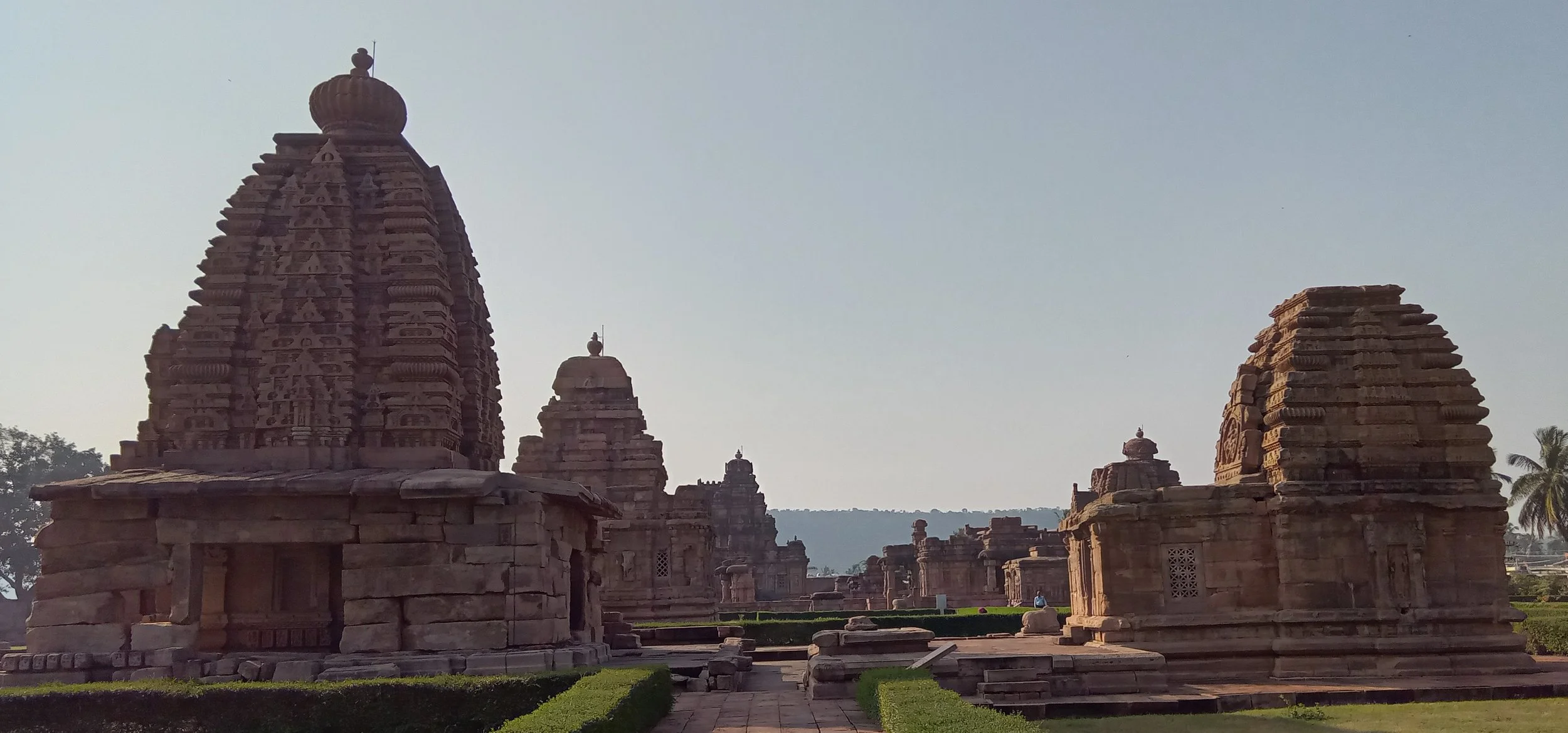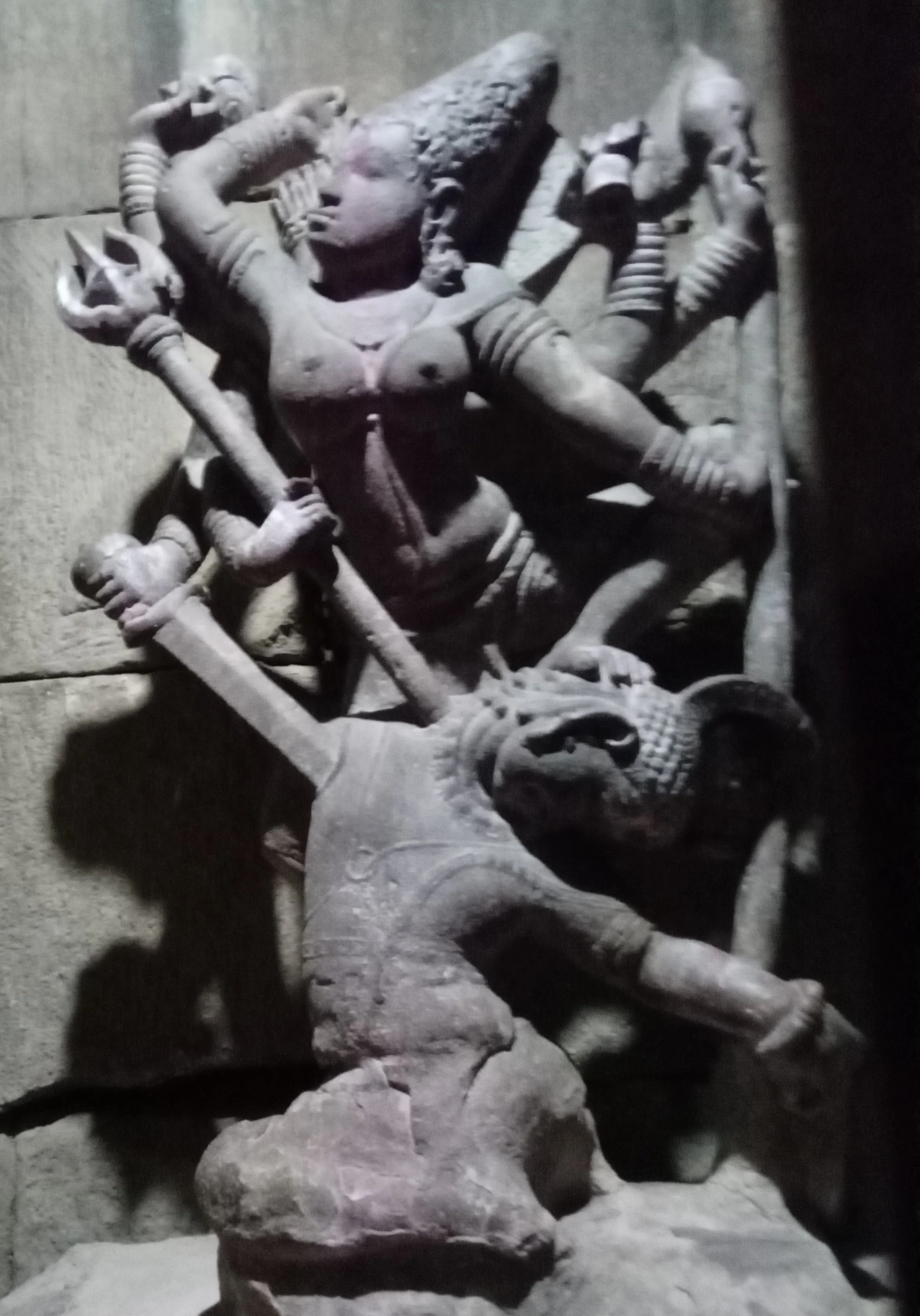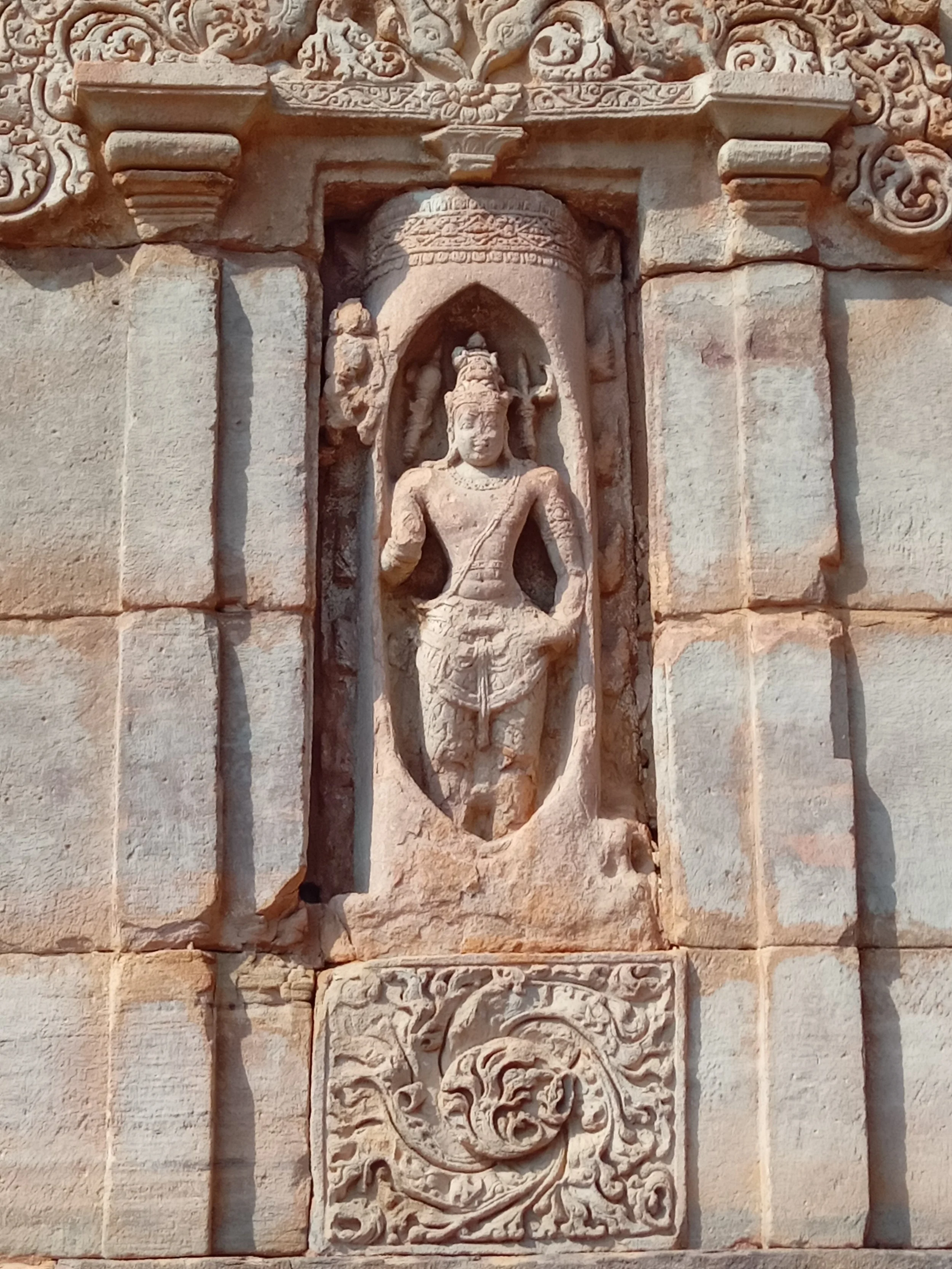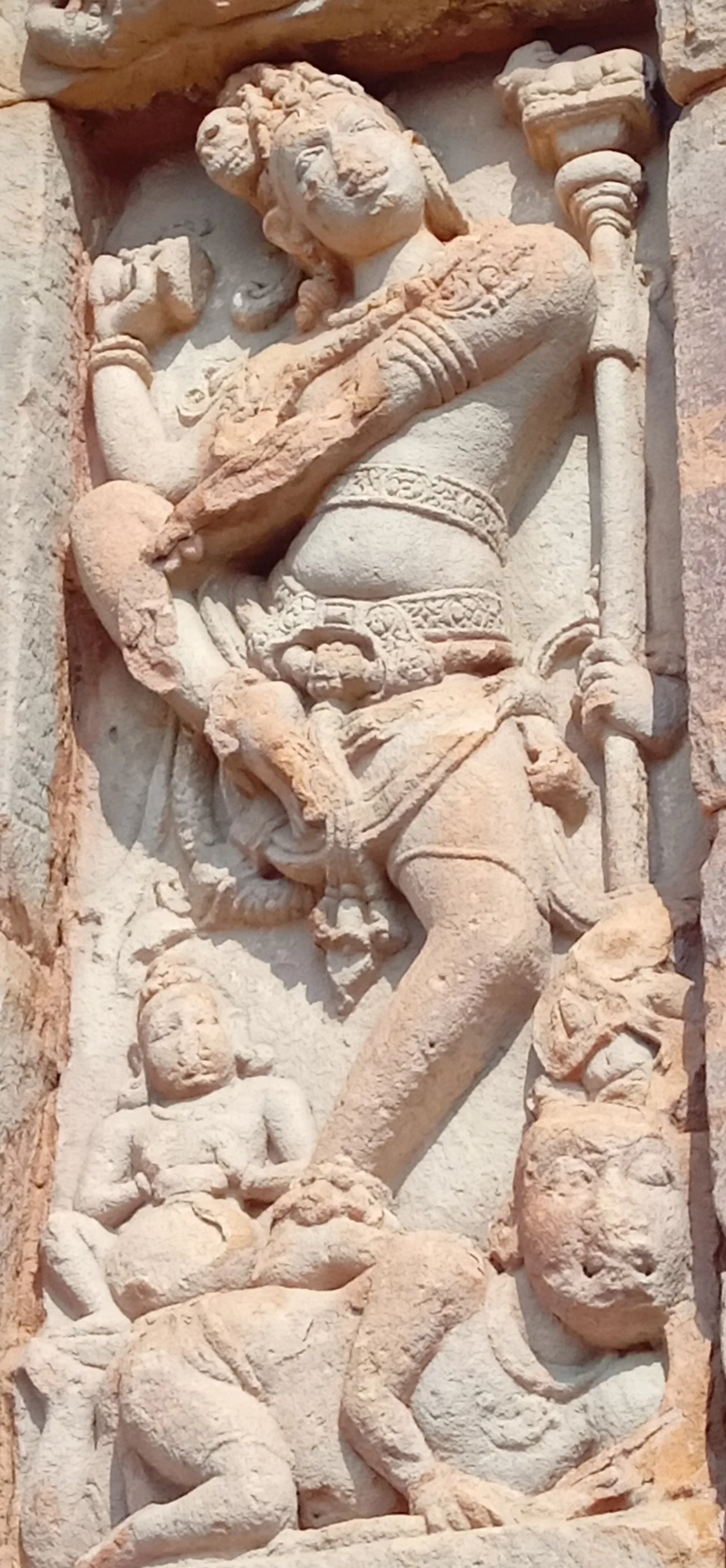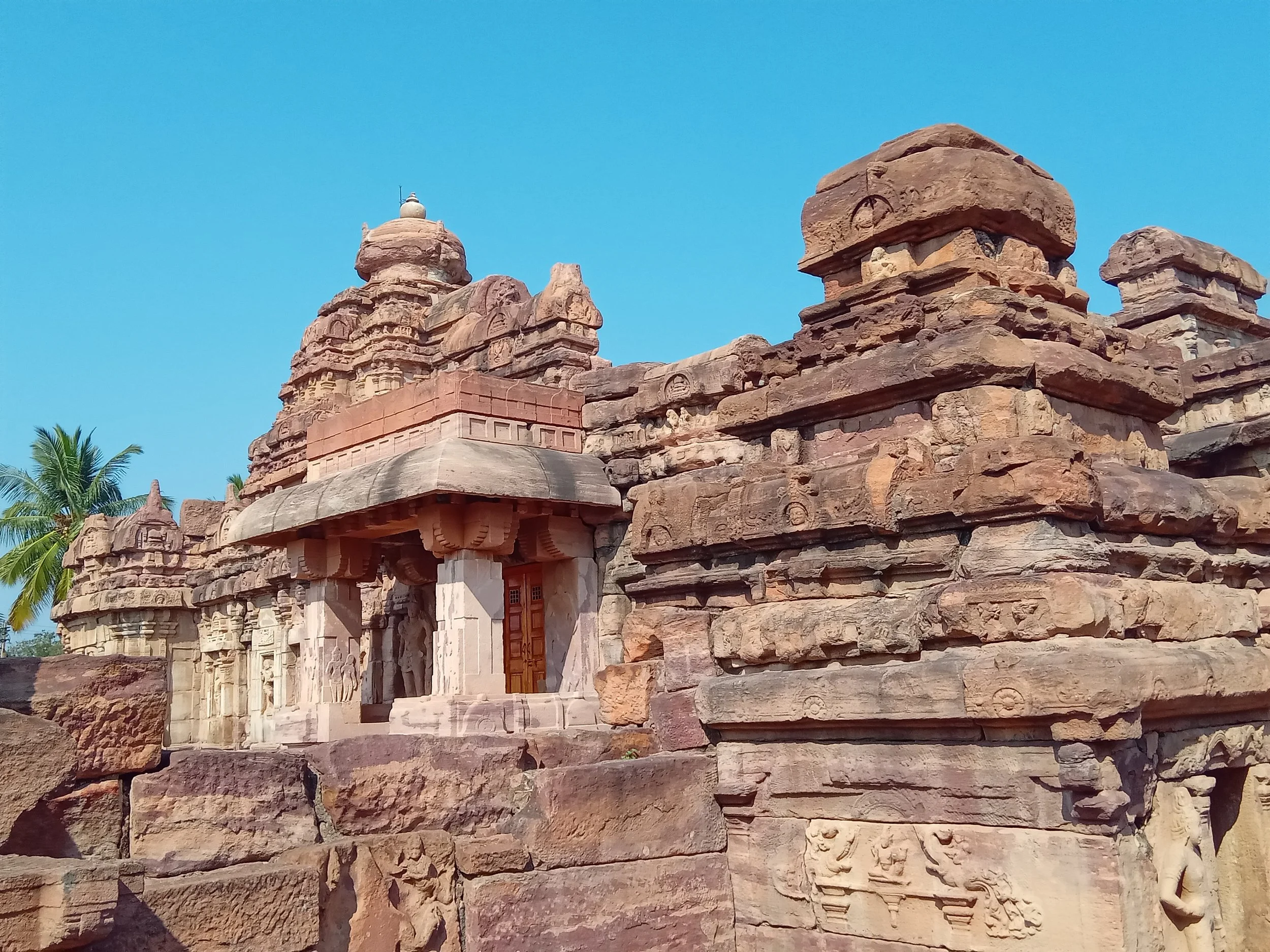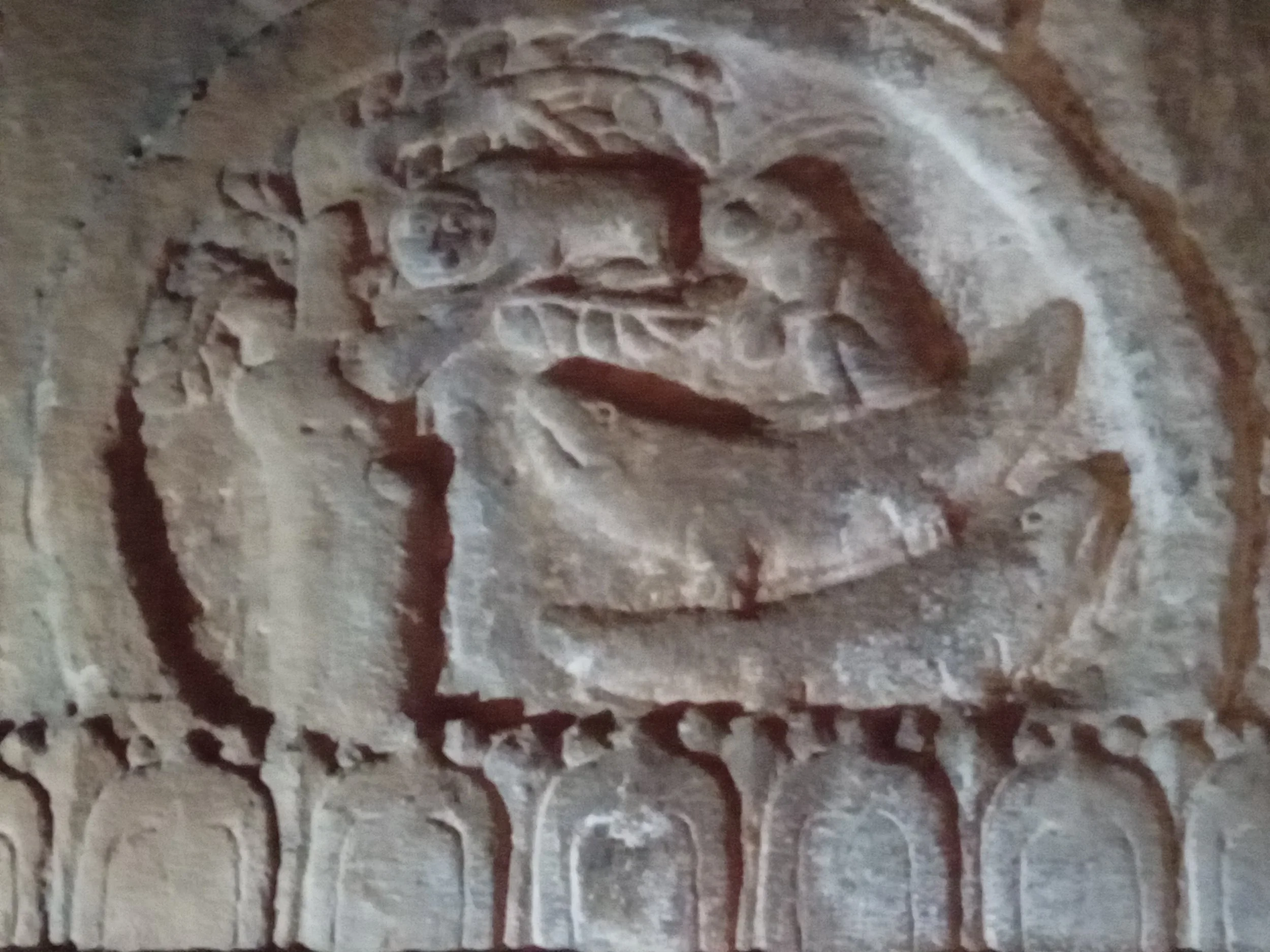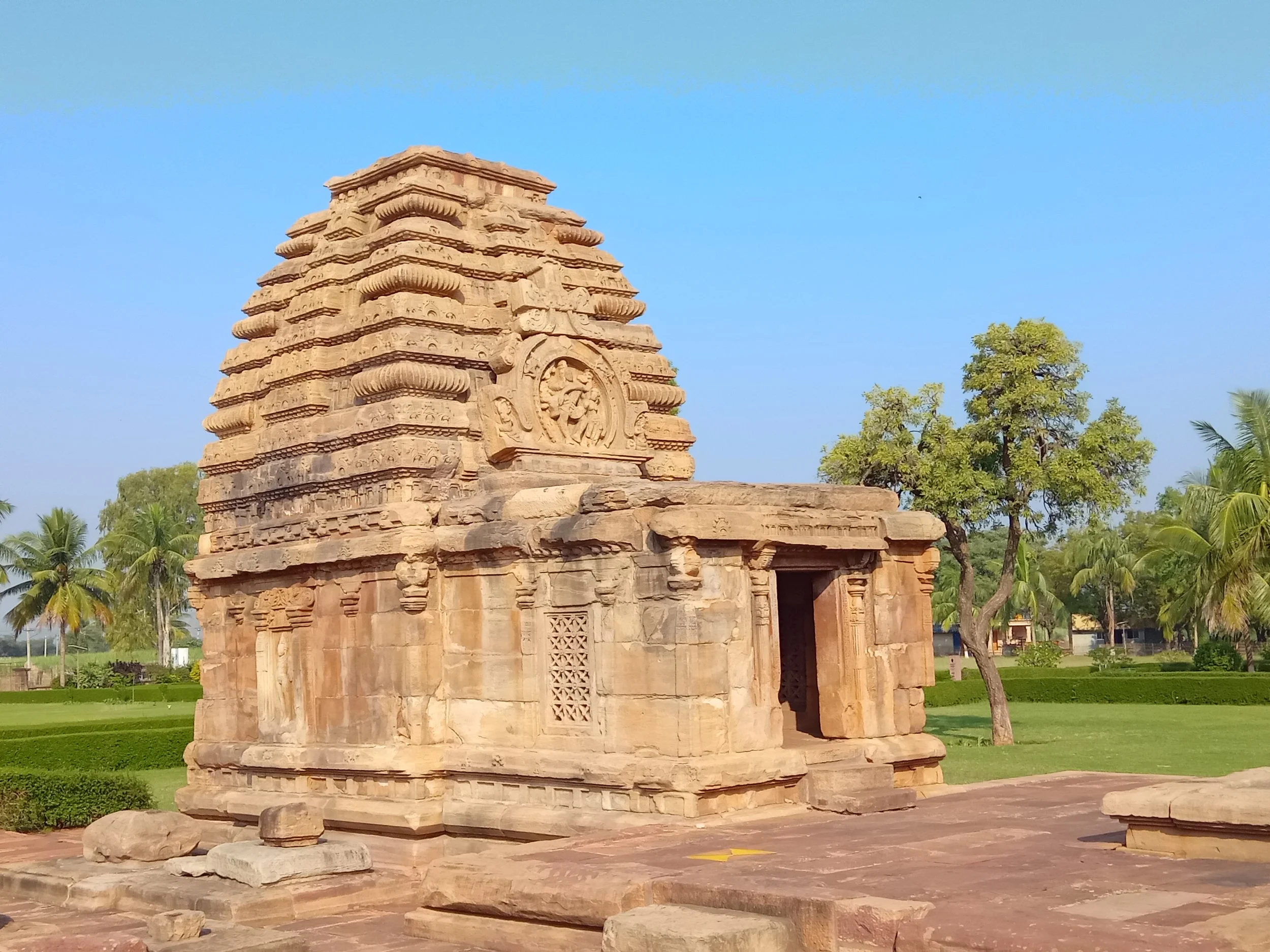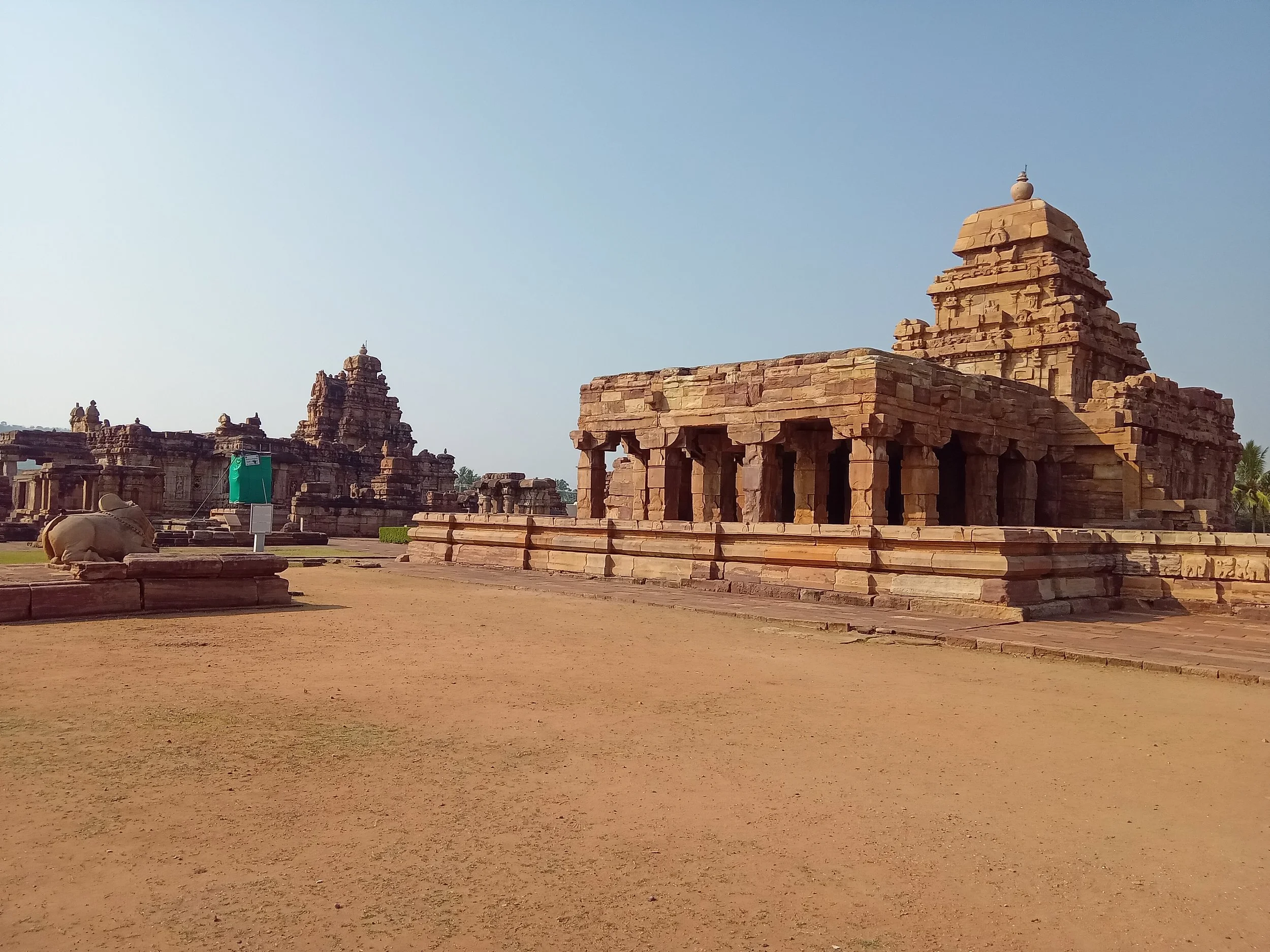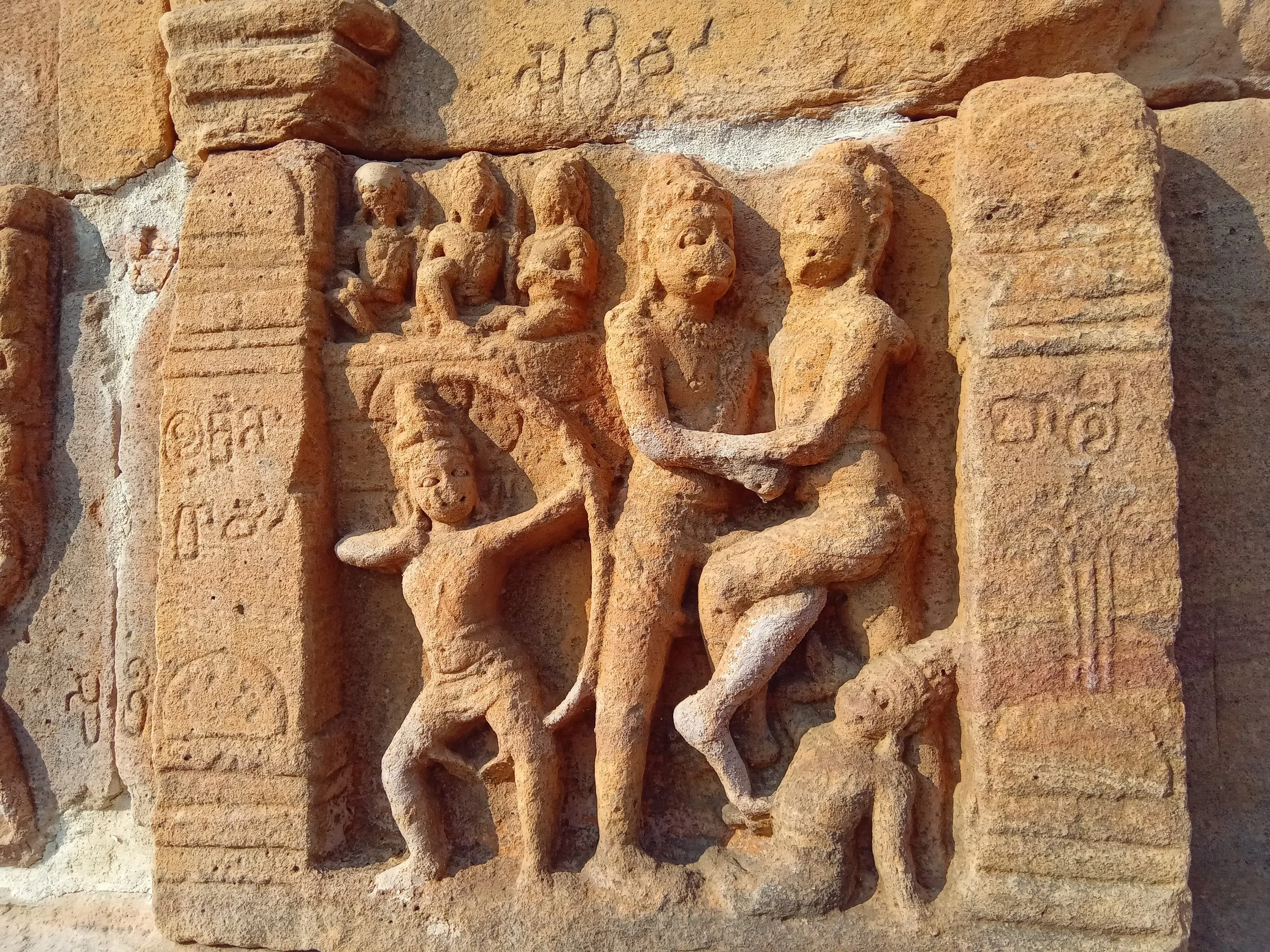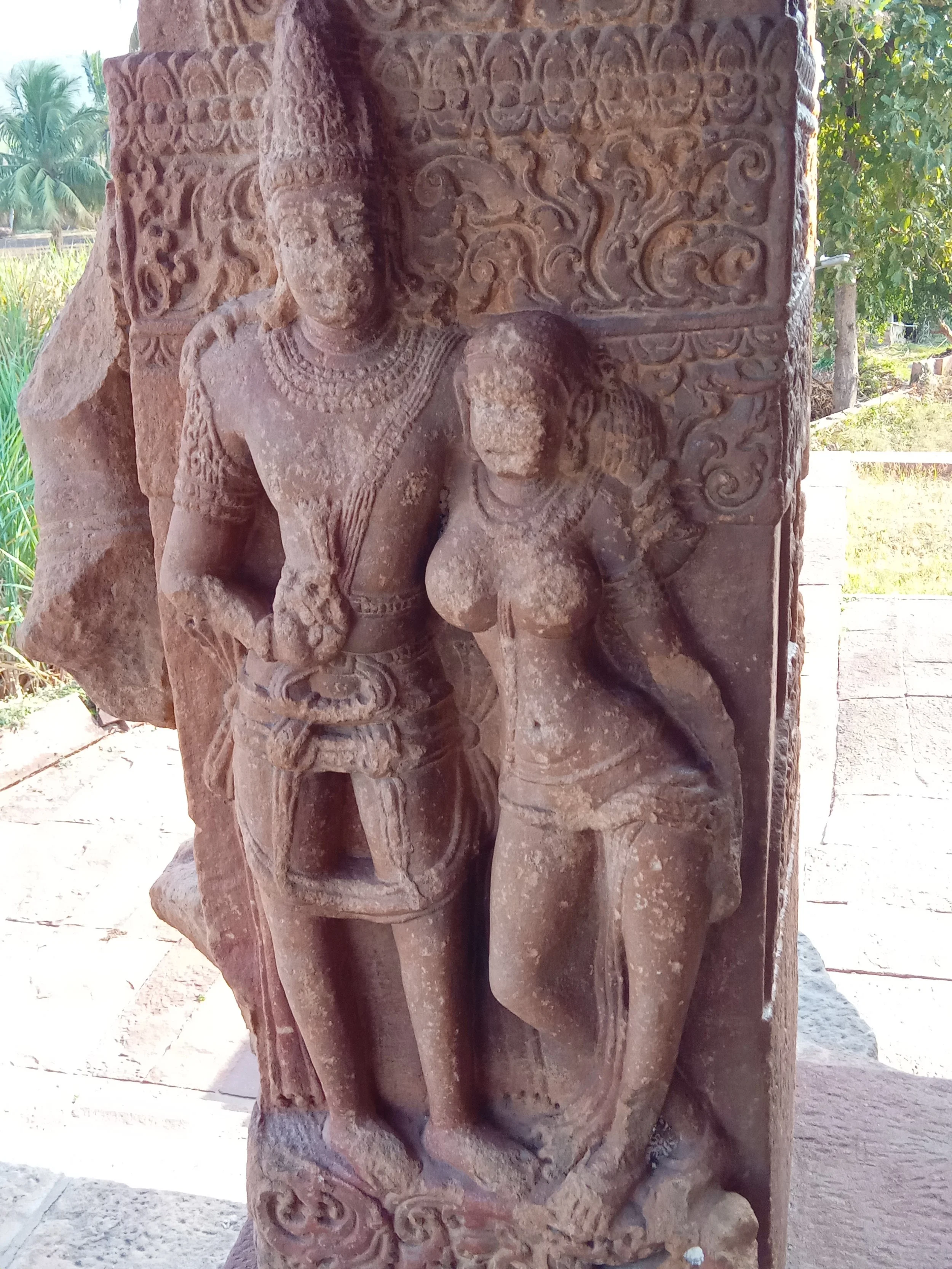Pattadakal
A mostly self-contained compound—exploring the monuments at Pattadakal took us the least amount of time among the various sites in the area. The compound consists of mainly eight temples, among which three especially stand out for various reasons: (a) the Galganatha, for the nearly complete and well-preserved, picturesque Nagara shikhara tower; (b) the Virupaksha, for simply being exquisite in every way, inside and out—and for being a “living” temple, as still in worship; and (c) the Mallikarjuna, having been conceived together with the Virupaksha as a kind of twin, although on a less grander scale. Let’s look at these three first.
The Galganatha
Although incomplete, check out the picturesque Nagara shikhara: almost an exact copy of an earlier Brahma temple at Alampur, Telangana. (Interestingly, the so-called North Indian style actually seems to have arrived there via the South first, in places like Alampur.)
The granite linga within the sanctuary
Note the ambulatory outside, with the shaded sides. We ended up sitting there for a few minutes to shelter from the hot sun!
The Virupaksha
This temple is storied—and rightly so, as the premises make it clearly evident from the outset, where we were told or rather instructed, to leave our footwear before entering. To begin with, we were struck by the exquisitely carved life-like Nandi in front.
The various sculptures in the enclosing mandapa were no less impressive: note the sundry hairdos.
The wall sculptures and the ones in the porch of the Virupaksha are so delightful (more about this below) I ended up doubling back after darshan in the inner sanctuary, which houses a linga. Right outside is a notable Mahishasura-Mardini Durga spearing the buffalo demon sculpture—even though the doors were closed our guide offered to snap a pic through the gap.
Durga Mahishasura Mardini spearing the buffalo demon, beside the main sanctuary
Our guide showed us Shiva appearing out of the Linga—or Lingodhbhava Shiva—on the outside wall and mentioned that one other notable instance of this sculpture is found in the Shiva temple at Sri Kalahasti (my wife’s hometown, and her face lit up hearing that name).
Recall Modi and all the brouhaha about a certain Sengol—the scepter of the leader of the land, supposedly originating from the Cholas (the prime minister’s office also released a fancy video educating us about the history)? Well, on the walls of the Virupaksha we can see a scepter with the exact same design, a few hundred years before the Cholas. What gives?
The Sengol: evidently predating the Cholas
The Mallikarjuna
The Virupaksha’s neighbor—and a kind of Virupaksha wannabe in design and plan—but the hemispherical roof over the tower is unique.
The Mallikarjuna also prominently features stories from the Panchatantra in the inner mandapa—whereas the Virupaksha focuses mostly on the epics.
From the Panchatantra: the monkey-crocodile story on one of the columns inside the Mallikarjuna
Courtly maidens in one of the porches of the Mallikarjuna
Now for all the rest, the story told in images: and the captions below.
The Kadasiddheshwara: a small jewel of a temple, the first we encountered in the compound
Right next: the Jambulinga
Shiva-Parvati fronting the Jambulinga
The Kashi Vishwanatha: note the interlocking horseshoe-shaped gavaksha arch motifs in the middle of the tower
The Sangameshwara
The Papanatha: Renowned for the Ramayana reliefs on the outer walls
From the Ramayana: the Vali-Sugriva fight, and that’s Rama with the bow
The Papanatha: courtly couple in the front porch (forming a nice pair of sculptures with a similar one in the Virupaksha, except the Papanatha one differs in the lady’s hairdo and posture)
Dancing Shiva and Parvati: ceiling inside the Papanatha
